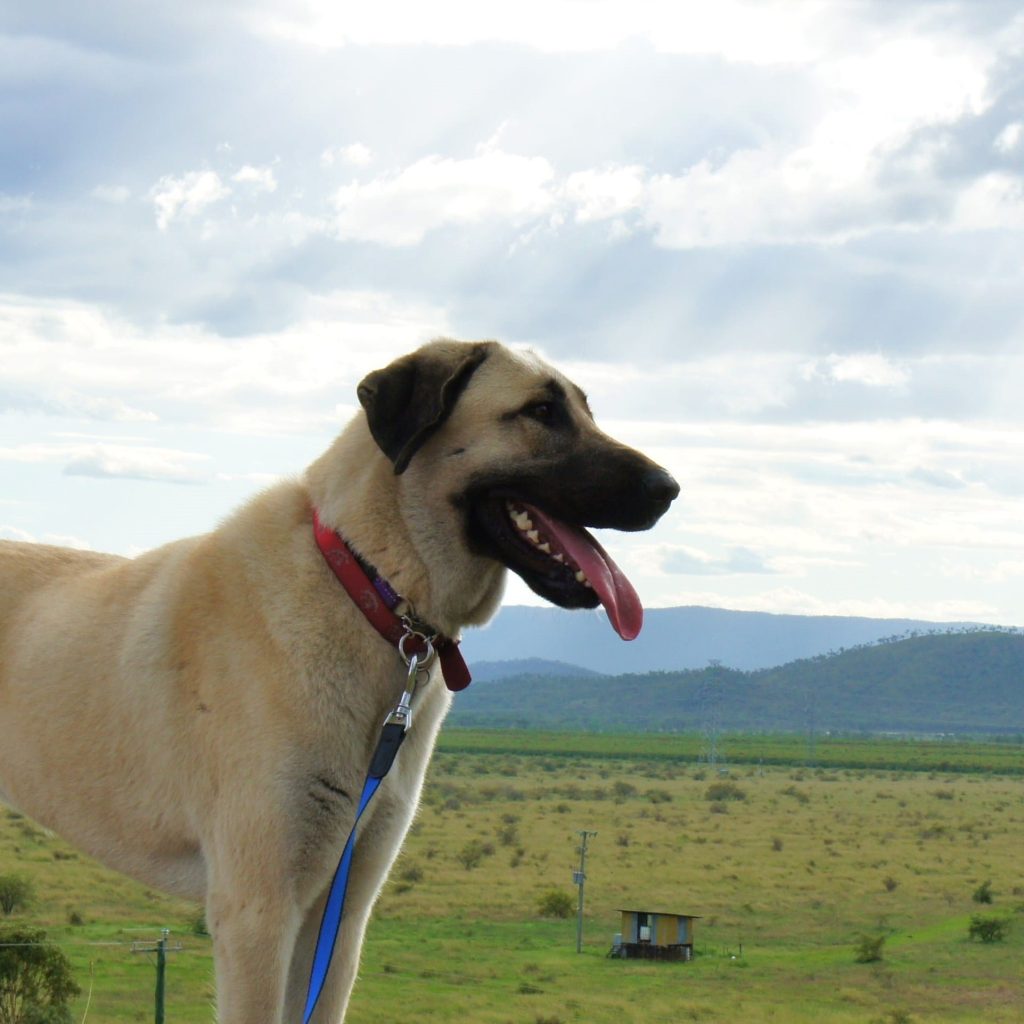What is Pet Insurance?
Pet insurance is a type of insurance policy designed to help pet owners cover the cost of veterinary expenses for their pets. Pet insurance provides financial assistance in the event that your pet becomes ill, injured, or requires medical treatment. This may encompass surgery, medications in relation to covered conditions.
How does Pet Insurance Work?

Following your pet’s treatment by a veterinarian, you settle the bill directly with your vet and subsequently submit a claim to your insurance provider. If the claim is approved, the insurance company will reimburse you for a portion of the covered incurred expenses. The amount reimbursed will depend on the type of policy you hold, the benefit percentage and any, limits and excess/deductible that are included in the insurance policy.
What is a Pet Insurance Excess/Deductible?
A pet insurance excess, also known as a deductible, is the amount of money you are responsible for paying out of pocket before your insurance coverage kicks into cover eligible veterinary expenses.
Here’s how it works:
1. You Incur Veterinary Expenses:
When your pet needs medical treatment or incurs veterinary expenses covered by your pet insurance policy, you will first pay the initial portion of those expenses out of your own pocket.
2. Excess/Deductible Amount:
If your claim is approved with some benefit payable, then the excess will be deduced from the claim benefit payable to you. For example, if your policy has a $100 excess, that $100 will be deduced from the benefit amount payable to you from the insurer.
3. Insurance Coverage Begins:
After you have paid the excess amount, your pet insurance coverage takes over, and the insurance company will reimburse you for a percentage (reimbursement rate) of the remaining eligible expenses, up to the policy’s coverage limits.
This is a simple case showing how the policy benefit percentage and excess are applied.
80% benefit percentage and $100 excess option selected
The eligible invoice amount from your vet is $2,000
The amount you can claim after applying your benefit percentage is $1,600
Less $100 is the excess ($100)
How much we pay is $1,500
Your total out-of-pocket expense including your excess is $500
*This policy coverage is an example only. Actual prices and coverage will vary. You should consider the Product Disclosure Statement to determine which products are appropriate for you.

Having an excess means you agree to take on a certain proportion of the risk. Typically, policies with higher excess have lower monthly premiums, but a higher out-of-pocket cost on eligible claims, while policies with lower excess have higher monthly premiums in return for a lower out-of-pocket cost on eligible claims. It’s important that you consider the impact of an excess on your premium and the out-of-pocket costs.
At Pet Insurance Australia, excess means an amount you contribute towards the cost of your claim(s), as shown on your certificate of insurance. The excess is calculated on a ‘per condition, per policy period’ basis. We do this for each condition treated that is unrelated to any other condition during the same policy period. Your excess also applies to each emergency boarding claim event. The excess will be deducted from your calculated claim benefits after we apply any benefit limit, sublimit and the benefit percentage to your claimed amount.
Pet Insurance in Australia
According to Animal Medicines Australia national survey 2022, Australia has one of the largest domestic pet populations in the world, it is estimated that only around 7% of Australians have pet insurance.
As the field of medicine and healthcare continues to advance in veterinary care, the range of available treatments and procedures for our pets is truly remarkable. Nonetheless, these breakthroughs often come with a high cost. Unlike human healthcare, where government subsidies play a significant role, pet owners bear the full financial responsibility. This may encompass expenses such as x-rays, anaesthesia, medications, surgical procedures and associated medical costs. Pet insurance is one way to help reduce the financial burden for pet owners and ensure that their pets receive the necessary care.
The pet insurance market in Australia provides a wide array of options, and Pet Insurance Australia (PIA) Pet Insurance presents a range of coverage levels tailored to your unique requirements. Whether you require protection for specialised consultations, diagnostic procedures like x-rays, medications, surgeries, or other medical treatments, it’s vital to thoroughly review the insurance provider’s policy booklet such as the Product Disclosure Statement (PDS) to ensure the product is right for you. With plans spanning from basic to comprehensive, you can select a policy with the assurance that a portion of your eligible veterinary expenses will be safeguarded in the event of unexpected incidents involving your pet.
(*1) Example high-end claims benefits paid, include:
- Foreign Body Ingestion (Fish Hook) - $14,316
- Traumatic Injury - $12,661
- Intervertebral Disc - $12,443
- Cataract - $12,340
*PIA Portfolio Data, 2023
How We Will Settle Your Claim?
How Do I Claim For Vet Treatments?
Review Your Policy for Coverage Eligibility
The extent to which your pet’s treatment is covered by your insurance hinges on the chosen policy type—be it basic or standard, covering specified accidental injuries and illnesses. Additionally, all pet insurance policies have certain exclusions, like pre-existing conditions. If unsure, you may want to reach out to your insurer to determine the eligibility of your pet’s treatment for coverage. You can always submit a pre-approval for upcoming treatment, to confirm if the condition and the associated veterinary costs are covered.
Choose Your Preferred Claim Method
Most pet insurance providers offer the option to make a claim by mail. Although, this process may be slower and requires the completion and signature of a claim form by both you and your vet. Alternatively, you can opt for a more streamlined process by having your vet submit an electronic pet insurance claim (eClaim) on your behalf for reimbursement, or you can submit the claim online yourself. If you are a PIA Pet Insurance policyholder, you can even make on-the-spot claims at participating vets through GapOnly®.
When submitting your claim, you’ll need to provide:
• An itemised paid invoice
• All relevant veterinary consultation notes pertaining to the claim (if your vet does not provide these notes directly, ensure they have the email address of your insurance provider, along with your name and policy number)
Discover GapOnly® Claim Options
GapOnly® simplifies the claims process, enabling pet owners to make on-the-spot claims and only pay the gap (the difference between the pet insurance benefit and your vet’s invoice under your policy). You can verify whether your insurance provider participates in GapOnly® and find a GapOnly® enabled vet on the GapOnly® website.
What is A Waiting Period?
What Is The Product Disclosure Statement (PDS)?
The PDS is an important document that explains what you are and are not covered for, depending on your chosen level of pet insurance. This document explains in-depth what your pet insurance policy includes and any general exclusions. It also demonstrates that your policy is split into two sections – illness and specified accidental injury.
At PIA, specified illness cover can cover a percentage of your vet expenses for a range of conditions, such as:
- Cancer
- Intervertebral Disc Disease (IVDD)
- Skin Conditions
- Eye/Ear Conditions
- Hereditary and congenial conditions
- Tick Paralysis
- And more
At PIA, specified accident cover can cover a percentage of your vet expenses for a range of conditions, such as:
- Burns
- Allergic reactions
- Snake bites
- Fractures
- Abscesses
- Tissue Damage
Note that not all conditions and treatments are covered and pre-existing conditions and general exclusions may apply.
There will be a PDS for each policy. For PIA, this includes Pet Essentials, Comprehensive and Major Medical. These documents will provide in-depth information on what your policy does and does not cover.
What Does Pet Insurance Cover?
Depending on your level of coverage, pet insurance can help towards the costs of eligible veterinary care. This can differ from basic insurance policies to the more comprehensive policies that will tend to cover more illnesses and other treatments. When choosing your preferred pet insurance provider, it is crucial to understand your coverage level and if it suits your pet’s needs.
Many pet households have proven that budgeting a little monthly towards pet insurance can make a big difference during accident or illness. When your pet becomes sick or injured, you could be left with a bill that includes:*
- Cost of surgery
- Anaesthetic costs
- Hospital stays
- Medication
- Lab testing
- Radiography
- Magnetic Resonance Imaging (MRI)
- 24hr care
- And more, depending on your pet’s condition
With PIA Pet insurance, you can be reimbursed as much as up to 80% of your eligible veterinary bills, depending on the type of cover, limits, waiting periods, pre-existing conditions and chosen excess. As with all insurance products, it is imperative always to read the PDS to understand your level of coverage clearly.
Additional Cover Depending on your policy, you may also be eligible for other benefits such as routine care (a non-insurance benefit) that provides a contribution up to the Routine Care limits towards;
- Desexing
- Microchipping
- Heartworm control
- Behavioural therapy
- Teeth cleaning
- Council registration fees
- Alternative therapies
- Prescription diets
- Cremation or burial
- Obedience training
*Not all conditions and treatments are covered by pet insurance. Please refer to the applicable Product Disclosure Statement for further information.
Refer to your certificate of insurance for a complete list of routine care items.
| What is Covered in all Plans |
|---|
Specified Accidental injuries and illnesses |
Tick paralysis |
Cancer treatment |
Skin conditions |
Hereditary and congenital conditions |
Emergency boarding |
Eye and ear conditions |
Cruciate ligament conditions (6 month waiting period applies but may be waived on application) |
Essential euthanasia |
Pet overseas travel insurance (New Zealand and the Norfolk Islands only) |
| Exclusions |
|---|
Certain pre-existing conditions |
Dental procedures |
Behavioural problems |
Elective treatments and procedures |
Food and diets |
Grooming |
Pregnancy |
Pet accessories |
What Is A Pre-existing Condition?

A pre-existing condition is any injury, illness, or health condition that your pet has shown symptoms of or received a diagnosis before the start of your pet insurance policy or during any applicable waiting period.
Pet insurance policies typically exclude coverage for pre-existing conditions. This means that if your pet has a pre-existing condition, any related treatment or care for that specific condition will not be covered by the insurance provider.
For example, if your pet has any signs or symptoms of cruciate ligament problems, prior to your policy commencement or during the applicable waiting period, you will not be covered for this condition or,
if your pet suffers from a severe illness prior to your policy commencement date or during the applicable waiting period, this could also be deemed as a pre-existing condition.
It’s important to note that the definition of pre-existing conditions can vary among pet insurance providers, so it’s crucial to thoroughly review the terms and conditions of your PDS to understand what is considered a pre-existing condition and how it may impact your coverage.
How Do I apply To Have A Pre-existing Condition to Be Reviewed?
The process for applying to have a pre-existing condition reviewed for your pet can vary depending on the specific pet insurance provider and their policies. However, here are some general steps to consider:
Review Your Policy:
Carefully review your pet insurance policy to understand its terms and conditions, including how pre-existing conditions are defined and handled. Some policies may have certain waiting periods or specific conditions for reconsideration.
Contact Your Insurance Provider:
Reach out to your pet insurance provider to inquire about their process for reviewing pre-existing conditions. You can typically do this by phone, email, or through the insurer’s online portal.
Gather Relevant Information:
Be prepared to provide your insurer with all relevant medical records, including your pet’s complete medical history, if requested. This may include previous vet visit notes, test results and invoices related to the condition in question.
Submit a Request:
Depending on your insurer’s requirements, you may need to submit a formal request to have the pre-existing condition reviewed. This request should include all the necessary information and documents.
Allow Time for Evaluation:
Your insurance provider will evaluate the information you’ve provided and may consult with their underwriters or veterinary experts. The process may take some time, so be patient.
Outcome Notification:
Once the review is complete, the insurance company will notify you of the outcome. They will inform you whether the pre-existing condition is eligible for coverage or if it remains excluded under the terms of your policy.
Follow-up:
If the condition is eligible for reconsideration, follow any further instructions from your insurer regarding claims and coverage for that condition.
It’s important to be aware that not all pet insurance providers offer reviews for pre-existing conditions, and those that do may have specific criteria or limitations. Additionally, the outcome of a review can vary depending on the circumstances and the insurance company’s policies.
When seeking a review for a pre-existing condition, it’s crucial to maintain open communication with your insurer, provide complete and accurate information, and follow their procedures and requirements to ensure the best possible outcome.
How Much Does Pet Insurance Cost?
The cost of pet insurance in Australia can vary significantly depending on several factors, including:
Type of Coverage:
The level of coverage you choose greatly influences the cost.
Pet's Age:
The age of your pet plays a significant role in pricing. Generally, younger pets have lower premiums, while older pets often have higher premiums due to increased health risks.
Breed:
Some breeds are more susceptible to certain health issues, and this can impact the cost of insurance. Breeds with known hereditary conditions may have higher premiums.
Location:
The cost of veterinary care can vary by region. If you live in an area with higher veterinary costs, it may affect your premium.
Reimbursement Level:
The percentage of eligible expenses reimbursed by the insurance company can affect the cost. Higher reimbursement rates may result in higher premiums.
Excess/Deductible:
The amount you choose as your excess/deductible can also impact the cost. Higher excesses/deductibles often result in lower premiums but will increase your out-of-pocket costs should you make a claim.
Annual or Lifetime Limit:
Policies with higher annual or lifetime limits may have higher premiums.
To get an accurate estimate of pet insurance costs, it’s recommended to obtain quotes from multiple insurance providers. This will allow you to compare policies, coverage options, and premiums to find the best fit for your pet’s needs and your budget.
Pet Insurance Australia policies entered into for the first time prior to 8 May 2023 and subsequent renewals of those policies are issued by The Hollard Insurance Company Pty Ltd ABN 78 090 584 473, AFSL 241436, arranged and administered by PetSure (Australia) Pty Ltd ABN 95 075 949 923, AFSL 420183 (PetSure) and promoted and distributed by PetSure’s Authorised Representative (AR) Pet Insurance Australia Pty Ltd ABN 85 113 507 850, AR 326233 (PIA). Pet Insurance Australia policies entered into for the first time on or after 8 May 2023 and subsequent renewals of those policies are issued by PetSure and promoted and distributed by PetSure’s AR, PIA. Any advice provided is general only and does not take into account your individual objectives, financial situation or needs. Please consider the Product Disclosure Statement (PDS) to ensure this product meets your needs before purchasing, or choosing to continue with the product. PDS and Target Market Determination available at petinsuranceaustralia.com.a.
